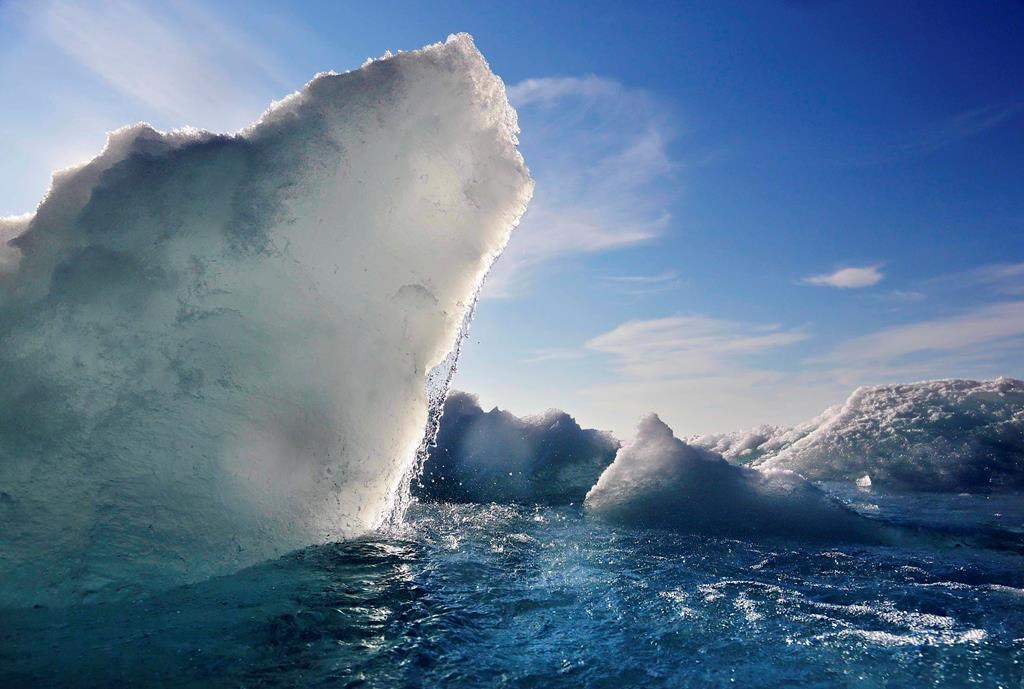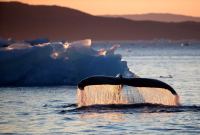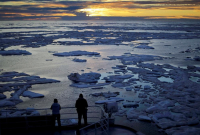Support strong Canadian climate journalism for 2025
An international summary of five year's worth of research on Arctic climate change concludes the top of the world is getting warmer faster than anyone thought.
And if it all sounds interesting but a little far removed from southern concerns, David Barber has news for you.
"There are very clear linkages there and they've been occurring consistently for the last 10, 15 years," said Barber, one of Canada's top ice scientists and a prominent contributor to the report.
"Most people don't understand how bad it is."
The report completed for the Arctic Council, the group of eight countries that ring the North Pole, was released last week. It represents the work of 90 scientists from around the world and summarizes the most recent research from 2010 to 2016.
"Cumulative global impacts related to Arctic change are expected to be large," the document said. "Adaptation costs and economic opportunities are estimated in the tens of trillions of U.S. dollars."
The report concludes the Arctic continues to warm at twice the pace of mid-latitudes and is likely to see warming of up to five degrees Celsius as early as 2040.
By then, the report says, summer sea ice is likely to be a thing of the past. Glaciers and ice caps will continue to melt and contribute to continually rising seas.
Melting permafrost will affect everything from resource development to freshwater flows to climate feedbacks from the release of stored carbon.
Then there's this: "There are emerging impacts of Arctic change on mid-latitude weather/climate."
Barber's already seeing it.
Last spring, he was on an Arctic voyage on the Coast Guard's research icebreaker, the Amundsen, when the trip had to be cancelled because the ship was pressed into weeks of search-and-rescue duty. Massive chunks of sea ice up to eight metres thick — ice that had migrated all the way from the Lincoln Sea north of Ellesmere Island — were threatening the maritime crab-fishing fleet
"It should not have been there," Barber said. "It was sinking little fishing vessels. It was causing problems with tankers stuck in the ice."
Breakdowns in the normal weather patterns in the High Arctic were allowing heavy, dangerous ice to drift further south.
"We expect this to happen more often in the future."
Barber said at least 15 new academic papers add weight to the theory that the loss of sea ice is causing changes in the upper atmosphere that disrupt southern temperatures and rainfall.
Barber is already advising southern agencies on questions such as how future rainfall patterns might change how much electricity can be generated from hydro dams.
"I just came from a meeting with Manitoba Hydro where this was the main topic of discussion."
Global air currents are increasingly disrupted. At one point last winter, Barber said, the North Pole was 29 degrees warmer than average. Air from California was being drawn to the top of the world.
Climate change in the Arctic is well underway and can't be stopped. But the report says if nations meet their greenhouse gas reduction targets under the Paris agreement, changes in the Arctic will stabilize to a new normal some time around 2040.
"We should have started 20 years ago," Barber said. "We didn't get our act together and we're still dicking around trying to figure out how to price carbon.
"These things are costing us. And they're costing the stability of our planet."






Comments
And yet our air-headed PM still wants to build pipelines. All looks, no brains.
In Canada, the northern part of the country is getting warmer than the south. Canada's "Sixth National Communication and First Biennial Report on Climate Change for 2014" to the UNFCCC, page 129, section 6.2.1: "Between 1948 and 2012, the annual average surface air temperature over Canada's landmass warmed by about 1.7ºC, approximatively twice the global average. While warming trends are observed consistently across the country, stronger trends are found in the north and west, particularly during winter and spring. Northern Canada (north of 60º latitude) has warmed at a rate approximately 2.5 times the global average since the late 1940's." This report was published in 2014 by the federal government run at that time by Harper's conservative party.
As stipulated in the above article, temperature in the northern Canada is still getting warmer. It has resulted in more forest fires, more insect infestations such as the mountain pine beetle, more permafrost melting. The effects of fire on the boreal forest have received considerable attention. However, less is known (there are more extensive research now) about the effects of fire on boreal peatlands.
Peatland ecosystems cover 2%-3% of the earth's land surface, but 25%-30% of the boreal forest region. It is estimated that they store 30% of the world's terrestrial carbon, but about 64% of the estimated total global boreal forest carbon stock. These carbon reservoirs are becoming increasingly vulnerable to fire as climate warming progresses. Peat fires are already contributing significantly to carbon emissions in Canada (the federal government don't take into account emissions from forest fires in its annual report on Canada's GHG emissions). Deep-burning peat fires have the potential for even higher emissions, as the carbon density of peat increases exponentially with depth. Peat fires can also be difficult to extinguish, and severe fire in peatlands can last for months, even burning throughout the winter under the snow layer (it took more than one year for firefighters to completely extinguish fires after a wildfire destroyed parts of Fort McMurray) Human impacts, such as climate change and draining of wetlands (e.g. exploitation of natural resources like the Alberta tar sands) are increasing the overall susceptibility of peatlands to fire.
(source: Natural Resources Canada, 2013-12-04: "Peatland fires and carbon emissions")
The combined Boreal and Subarctic regions contain 97% (142.94 Gt) of the soil organic carbon mass occurring in Canada's peatlands. The peatland sensitivity model indicates that approximately 52% (74.16 Gt) of the organic carbon mass in the two regions, which is approximately 50% of the total organic carbon mass in Canadian peatlands (147.11 Gt), will be severely to extremely severely affected by climate change.
(source: Canadian Water Resources Journal, Charles Tarnocai, Agriculture & Agri-Food Canada, May 2009)